
GEOMORPHOLOGY
Scope & Guideline
Shaping Knowledge in Geomorphology.
Introduction
Aims and Scopes
- Investigation of Landforms and Processes:
The journal explores the formation and evolution of various landforms, including river channels, dunes, and coastal features, emphasizing the processes that shape them. - Climate-Geomorphology Interactions:
Research in this area examines how climatic changes impact geomorphic processes, such as erosion, sediment transport, and landscape evolution, particularly in response to climate change. - Tectonic and Geological Influences:
Studies often assess the influence of tectonic activity and geological structures on landform development and landscape dynamics, contributing to the understanding of active geological processes. - Human-Environment Interactions:
The journal includes research on anthropogenic impacts on geomorphological processes, addressing issues like land use changes, urbanization, and their effects on natural landscapes. - Methodological Innovations:
'Geomorphology' encourages the use of advanced methodologies, including remote sensing, GIS, and numerical modeling, to analyze geomorphic phenomena and improve data collection techniques.
Trending and Emerging
- Impact of Climate Change on Geomorphological Processes:
Research focusing on how climate change affects geomorphic processes is gaining traction, addressing issues such as increased erosion rates, sediment transport changes, and landscape resilience. - Biogeomorphology:
The integration of biological factors into geomorphological studies is becoming more prevalent, exploring how vegetation and ecosystems interact with geomorphic processes to shape landscapes. - Geohazards and Risk Assessment:
There is a growing emphasis on understanding geomorphological hazards (e.g., landslides, floods) and their implications for risk management and environmental planning. - Technological Advancements in Data Collection:
The use of advanced technologies such as UAVs, LiDAR, and machine learning for geomorphological analysis is on the rise, allowing for more detailed and accurate assessments of landform changes. - Urban Geomorphology:
Research that examines the impacts of urbanization on geomorphological processes, including landscape modification and sustainability, is increasingly recognized as vital in the Anthropocene context.
Declining or Waning
- Traditional Fluvial Geomorphology:
There is a noticeable decline in papers focusing solely on traditional fluvial geomorphology, as the field has expanded to incorporate interdisciplinary approaches and integrate more advanced methodologies. - Static Landform Analysis:
Research that emphasizes static descriptions of landforms without considering dynamic processes or temporal changes is becoming less common, as the field increasingly values process-oriented studies. - Simplistic Models of Erosion and Sediment Transport:
Earlier models that did not account for the complexities of sediment transport dynamics and environmental interactions are being replaced by more sophisticated, integrative models.
Similar Journals
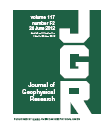
JOURNAL OF GEOPHYSICAL RESEARCH-EARTH SURFACE
Connecting Disciplines to Decode Earth’s Surface.JOURNAL OF GEOPHYSICAL RESEARCH-EARTH SURFACE, published by the American Geophysical Union, stands as a leading voice in the fields of Earth-Surface Processes and Geophysics. With an impressive impact factor placing it in the Q1 category for both disciplines, this journal offers invaluable insights and research findings that address critical challenges related to Earth's surface dynamics and processes. Since its inception in 2004, the journal has been dedicated to fostering a deeper understanding and interdisciplinary exploration of topics critical to environmental science, geology, and geophysics. Researchers and professionals in the field will find cutting-edge studies meticulously peer-reviewed to ensure high quality and relevance, making it an essential resource for academics, practitioners, and students alike. The journal's significant Scopus rankings — 25th out of 179 in Earth-Surface Processes and 26th out of 165 in Geophysics — underscore its influence and the rigor of its content, encouraging submission and engagement from leading scholars globally.
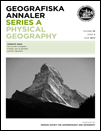
GEOGRAFISKA ANNALER SERIES A-PHYSICAL GEOGRAPHY
Unveiling the Secrets of Our PlanetGeografiska Annaler Series A-Physical Geography, published by Taylor & Francis Ltd, is a leading academic journal dedicated to the advancing field of physical geography. With a rich publication history spanning from 1979 to 2024, this journal stands out in its categories, being positioned in the Q2 quartile for both Geography, Planning and Development and Geology in 2023. The journal is recognized for its contribution to Earth and Planetary Sciences, evidenced by its Scopus rankings placing it in the top 31% and 32% of its respective disciplines. Belonging to a distinguished publisher from the United Kingdom, it provides a vital platform for researchers, professionals, and students to disseminate and engage with cutting-edge research. While the journal does not currently offer open access, it remains a pivotal resource for those involved in the study of physical geography, offering insights that enhance our understanding of the Earth's processes and environments.

ACTA CARSOLOGICA
Championing Open Access for Groundbreaking Earth ResearchACTA CARSOLOGICA is an esteemed open-access journal published by the KARST RESEARCH INSTITUTE ZRC SAZU in Slovenia, dedicated to advancing knowledge in the field of Earth-Surface Processes. Since its inception in 1981, and with an open-access model adopted in 2012, this journal has provided a vital platform for researchers to disseminate their findings and engage with the global scientific community. With an impact factor reflecting its scholarly contribution and a placement in the Q3 quartile of its category as of 2023, ACTA CARSOLOGICA is positioned among notable journals in Earth and Planetary Sciences. The journal plays a crucial role in facilitating discussions on karst and related environments, making it an essential resource for academics, professionals, and students interested in environmental processes and geosciences. Its comprehensive coverage of converged topics and ongoing research developments underscores its significance in promoting scientific inquiry and fostering academic collaboration.
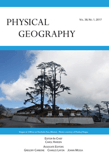
PHYSICAL GEOGRAPHY
Advancing Knowledge in Physical GeographyPHYSICAL GEOGRAPHY is a prominent academic journal published by Taylor & Francis Ltd, focusing on a wide array of topics within the realm of physical geography, including atmospheric science, earth sciences, and environmental science. With an esteemed history since its inception in 1975 and covering research up to 2024, this journal holds significant relevance in academia, evidenced by its ranking in the Q2 category for both Earth and Planetary Sciences and Environmental Science, as well as its Q3 standing in Atmospheric Science for 2023. This journal serves as a vital platform for scholars and practitioners alike, fostering the dissemination of innovative research findings and interdisciplinary collaboration. Although it is not an Open Access journal, it remains highly regarded, with Scopus rankings placing it within the top percentile of its categories. Researchers, professionals, and students seeking to contribute to or keep abreast of critical developments in the field will find PHYSICAL GEOGRAPHY an indispensable resource for advancing their knowledge and understanding of physical geographic phenomena.
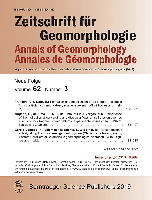
ZEITSCHRIFT FUR GEOMORPHOLOGIE
Exploring the Dynamics of Earth's Surface.ZEITSCHRIFT FUR GEOMORPHOLOGIE is a prestigious journal dedicated to the field of geomorphology, published by GEBRUDER BORNTRAEGER from Germany. With the ISSN 0372-8854 and E-ISSN 1864-1687, this journal serves as a vital platform for researchers, professionals, and students interested in understanding the dynamic processes that shape our Earth’s surface. The journal has consistently maintained a solid academic reputation, achieving a Q3 ranking in key categories including Earth and Planetary Sciences (miscellaneous), Earth-Surface Processes, and Geography, Planning and Development as of 2023. This reflects its position within the global scientific community; ranked at #93 out of 179 in Earth-Surface Processes, contributing to crucial discussions surrounding environmental changes and landform evolution. Although ZEITSCHRIFT FUR GEOMORPHOLOGIE is not an Open Access publication, it offers extensive insights and findings from converged years spanning from 1979 to 2019 and again from 2021 to 2022. The journal is located at Johannesstr 3A, D-70176 Stuttgart, Germany, and plays a pivotal role in advancing geomorphological research that impacts natural sciences, ecology, and planning strategies worldwide.

Revista Brasileira de Geomorfologia
Unveiling the Processes Shaping Our PlanetRevista Brasileira de Geomorfologia is a prominent open-access journal dedicated to the field of geomorphology, fostered by the UNIAO GEOMORFOLOGIA BRASILEIRA since its inception in 2000. Based in Brazil, this journal serves as a vital platform for researchers, professionals, and students to disseminate and engage with cutting-edge research on the dynamic processes shaping the Earth's surface. With an ISSN of 1519-1540 and an E-ISSN of 2236-5664, it has earned its place within the academic community, ranking in the Q3 category in the Earth-Surface Processes domain according to the latest 2023 quartiles. The journal's metrics, including a Scopus rank of 123/179 within its category, reflect its commitment to quality research. By facilitating open access to its content, the Revista Brasileira de Geomorfologia not only promotes scholarly communication but also enhances the visibility of vital studies detrimental to understanding geomorphological transformations and environmental change. Join the ongoing discourse and contribute to advancing knowledge in this essential field of Earth sciences.

QUATERNAIRE
Advancing Knowledge in Earth-Surface Processes and Geology.QUATERNAIRE is a reputable journal managed by the Société Géologique de France, specializing in the realms of Earth-Surface Processes and Geology. This esteemed publication has been a vital platform for scientific discourse since its inception, presenting compelling research and insights from both fields. With a significant impact in the academic community, it currently holds a Q3 quartile ranking in the 2023 Scopus categories, demonstrating its importance in disseminating knowledge related to geological phenomena. Although QUATERNAIRE does not have an open access model, it ensures that critical research is accessible to a wide audience, enhancing collaboration among geoscientists and environmental researchers. Based in France at 77, Rue Claude-Bernard, Paris F-75005, this journal continues to evolve its publication scope, welcoming contributions that delve into the intricacies of Earth's processes from 1990 to 2024. Researchers, professionals, and students alike will find valuable resources and inspiration within its pages, contributing to a deeper understanding of our planet's past and present.
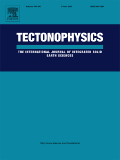
TECTONOPHYSICS
Advancing Earth Science through Innovative ResearchTECTONOPHYSICS is a leading journal published by Elsevier that has been at the forefront of earth and planetary sciences since its inception in 1964. With both its print and e-ISSN identifiers (0040-1951 and 1879-3266), the journal offers a reputable platform for disseminating high-quality research in Earth-Surface Processes and Geophysics, proudly positioned in the Q1 category for both fields in 2023. With a Scopus ranking of #43 out of 179 in Earth-Surface Processes and #43 out of 165 in Geophysics, TECTONOPHYSICS demonstrates a strong impact, making it an essential resource for researchers and professionals involved in the geological and geophysical sciences. Published in the Netherlands, TECTONOPHYSICS is committed to advancing knowledge in tectonics and related disciplines, fostering innovative research that impacts our understanding of Earth's dynamic processes. The journal invites contributions that push the boundaries of science, making it a must-read for academia and industry alike.

Cuaternario y Geomorfologia
Connecting Past and Present Through GeomorphologyCuaternario y Geomorfologia is a distinguished journal published by the Spanish Quaternary Research Association, focusing on the interdisciplinary study of Quaternary research, geomorphology, and related fields. With its ISSN 0214-1744 and a publication history spanning from 2012 to 2024, the journal serves as a critical platform for researchers and practitioners in geography, geology, and paleontology. Although its current Scopus rankings place it in the lower quartiles across various categories, being Q4 in Earth-Surface Processes, Geography, Planning and Development, Geology, and Paleontology, Cuaternario y Geomorfologia continues to push boundaries within its sphere, aiming to foster a deeper understanding of Earth sciences. Situated in Madrid, Spain, the journal's commitment to sharing groundbreaking research without access barriers enhances its value for academics, offering insights that drive forward the fields of Quaternary studies and beyond. Researchers, professionals, and students alike will find a rich repository of knowledge within its pages, making it an essential resource for current and aspiring experts in the discipline.
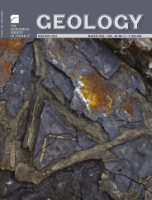
GEOLOGY
Advancing Earth Sciences Through Innovative ResearchGEOLOGY, published by the Geological Society of America, Inc, is a premier journal dedicated to advancing knowledge, research, and discussion in the field of geology. With an ISSN of 0091-7613 and an E-ISSN of 1943-2682, this journal stands out with an impressive Q1 ranking in Geology for 2023, positioning it among the top journals in the realm of Earth and Planetary Sciences, specifically holding a remarkable rank of 11 out of 321, reflecting its 96th percentile status. This journal aims to publish innovative research articles that cover all aspects of geology, from tectonics and sedimentology to paleontology and mineralogy, offering invaluable insights for researchers, professionals, and students alike. Although not currently open access, GEOLOGY maintains a rigorous review process ensuring the quality and integrity of the research it publishes. For more than five decades, spanning from its inception in 1973 to the upcoming publications in 2024, GEOLOGY has been instrumental in shaping the geological discourse and continues to be a vital resource for the scientific community.